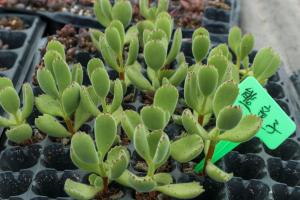How to Cut Back a Rubber Tree Plant
Rubber tree plants are a popular indoor plant choice due to their attractive glossy leaves and low maintenance requirements. But if your rubber tree plant has grown too tall or wide, it may be time for a trim. Cutting back your rubber tree plant can help promote new growth and keep your plant looking healthy and vibrant. Here’s how to do it:
When to Cut Back Your Rubber Tree Plant
The best time to cut back your rubber tree plant is in the spring or early summer when the plant is actively growing. This will allow the plant to recover more quickly from any cutting or pruning. Avoid pruning in the fall or winter when the plant is dormant, as this can stress the plant and make it more susceptible to disease.
Tools You Will Need
To cut back your rubber tree plant, you will need a few simple tools:
Pruning shears or scissors
Gloves
Clean cloth or alcohol wipes
Step-by-Step Guide to Cutting Back Your Rubber Tree Plant
Follow these simple steps to cut back your rubber tree plant:
Start by examining your plant to identify the branches or stems that you want to cut back. Look for any branches that are damaged, diseased, or overgrown.
Put on a pair of gloves to protect your hands from the plant’s sticky sap.
Using your pruning shears or scissors, cut back the selected branches or stems to your desired length. Make sure to cut at an angle to prevent water from accumulating on the cut surface and potentially causing rot.
Once you have finished cutting, wipe down your tools with a clean cloth or alcohol wipe to prevent the spread of any plant diseases.
Caring for Your Rubber Tree Plant After Cutting Back
After cutting back your rubber tree plant, it is important to give it proper care to promote new growth and prevent any stress or damage. Here are some tips:
Water your plant regularly but avoid overwatering. Allow the soil to dry out slightly between waterings to prevent root rot.
Keep your plant in a bright, indirect sunlight to promote healthy growth. Too much direct sunlight can scorch the leaves.
Fertilize your plant with a balanced fertilizer every two weeks during the growing season to promote healthy growth.
Monitor your plant for any signs of stress or disease, such as yellowing leaves or fungal growth. If you notice any issues, take action promptly to prevent further damage.
With proper care and maintenance, your rubber tree plant will continue to thrive and add a touch of natural beauty to your indoor space.

 how many times do yo...
how many times do yo... how many planted tre...
how many planted tre... how many pine trees ...
how many pine trees ... how many pecan trees...
how many pecan trees... how many plants comp...
how many plants comp... how many plants can ...
how many plants can ... how many plants and ...
how many plants and ... how many pepper plan...
how many pepper plan...































